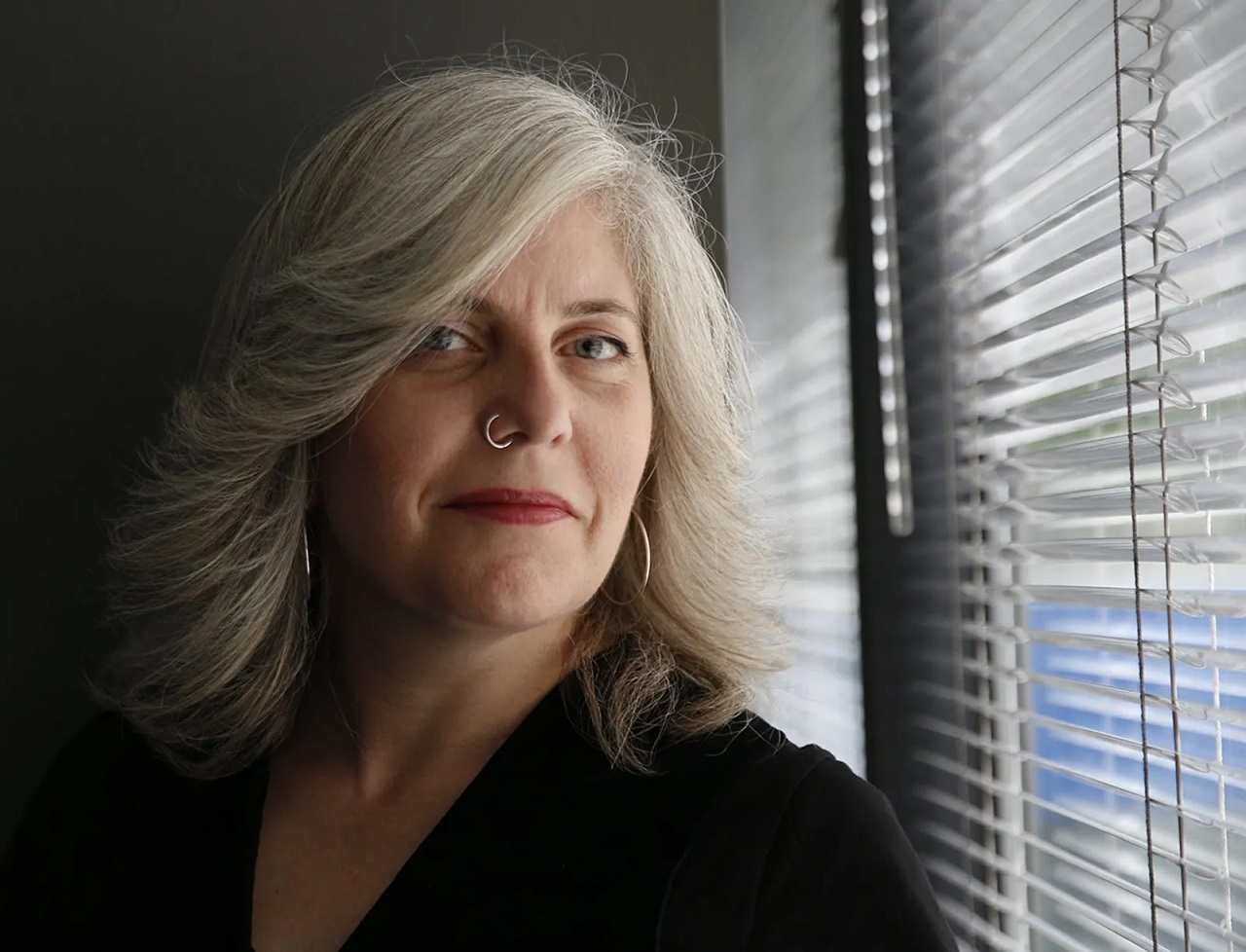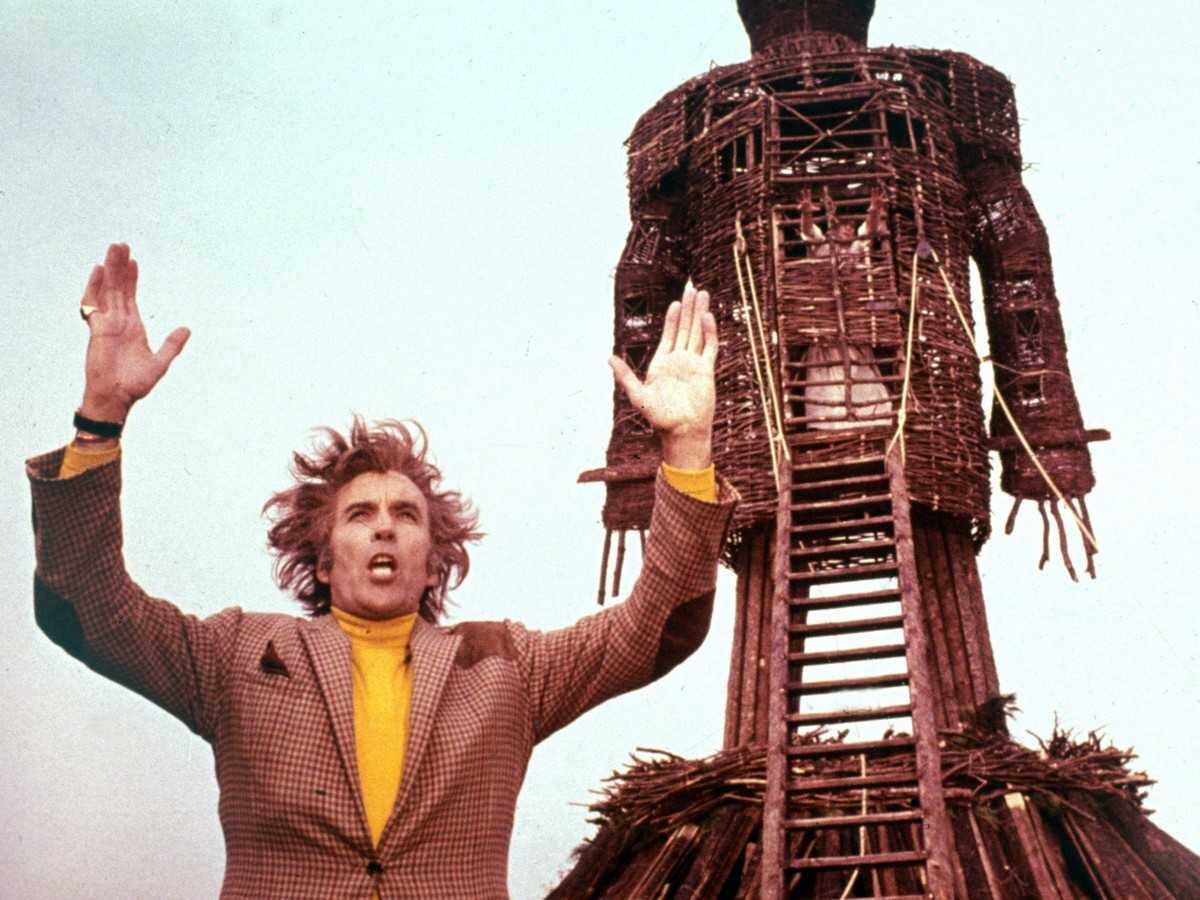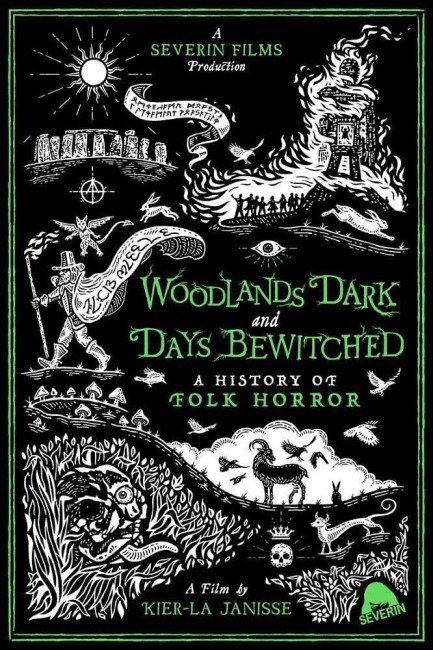USA. 2021.
Crew
Director/Screenplay – Kier-La Janisse, Producers – Winnie Cheung, David Gregory & Kier-La Janisse, Music – Jim Williams, Animation – Ashley Thorpe, Papier Collage Sequences – Guy Maddin, Animated by Zena Grey & Brendt Rioux. Production Company – Severin Films.
With
Gail-Nina Anderson, Mariano Baino, Geraldine Beskin, Richard Blackburn, Laura Lauguercio Canepa, Darren Charles, Lawrence Gordon Clark, Ian Cooper, John Cussans, Sam Deighan, Mattie Do, Sam Dunn, Jeremy Dyson, Robert Eggers, Kat Ellinger, Abraham Castillo Flores, William Fowler, Katrin Gebbe, Piers Haggard, Lindsay Hallam, Bruce G. Hellenbeck, Alexandra Heller-Nicholas, Sean Hogan, Mitch Horowitz, Howard David Ingham, Briony Kidd, Chad Crawford Kinkle. Kevin Kölsch, Mikel Koven, Alice Lowe, Bernice M. Murphy, Ian Ogilvy, Dr Dejan Ognjanvic, Andy Paciorek, Mark Pilkington, Vic Pratt, Carlos Primati, Dennison Ramalho, Amanda Reyes, Jonathan Rigby, John Leman Riley, Adam Scovell, Jasper Sharp, Kali Simmons, Teresa Sutherland, Emma Tammi, Pete Tombs, Dr Sam Waymon, Jesse Wente, Maisha Wester, Dennis Widmeyer, Robert Wynne-Simmons
Woodland Dark and Days Bewitched A History of Folk Horror is a debut film from Kier-La Janisse. The Canadian Janisse started out as a specialty film event organiser, creating the Cinemuerte horror festival than ran between 1999 and 2005 in Vancouver. In between assorted other festivals, she became programmer at the Alamo Drafthouse between 2003 and 2007 and for Fantastic Fest between 2005-7. She has also written two books A Violent Professional: The Films of Luciano Rossi (2007) and the acclaimed quasi-autobiographical House of Psychotic Women: An Autobiographical Topography of Female Neurosis in Horror and Exploitation Films (2012), as well as edited several other works. She has also served as a producer on a number of documentary shorts to accompany dvd releases of classic horror and exploitation films from Severin Films. Severin co-founder David Gergory, also the director of Lost Soul: The Doomed Journey of Richard Stanley’s Island of Dr. Moreau (2014), acts as a producer here, while Kier-la acted as producer/co-presenter of Gregory’s Tales of the Uncanny: The Ultimate Survey of Anthology Horror (2020).
I had met Kier-La Janisse when we were both living in Vancouver in the late 1990s – in fact, it was not long after I had launched the first version of Moria. She hosted the Cinemuerte Festival and I went to cover it where she graciously afforded me a reviewer’s pass – it was where I first saw NEKRomantik (1987). I was even interviewed for a mini documentary she was making about the event.
Folk Horror is a genre label that has gained increasing attention in recent years. It centres around films that depict Celtic and pagan ritual, of the old religion being practiced in the modern world or of ancient supernatural entities lurking in the woods. I had always assumed that the term ‘folk horror’ was coined in the documentary series A History of Horror with Mark Gatiss (2010) but Jonathan Rigby, who was writer for that series, corrects this and says he merely appropriated the term from use by scholars in the early 20th Century.
Janisse makes a beeline for what she calls the Unholy Trinity in British Folk Horror – Matthew Hopkins – Witchfinder General (1968), Blood on Satan’s Claw (1971) and The Wicker Man (1973), discussing their importance to the genre and interviewing many of the key figures involved with these. These laid down the essential tropes of the Old Ways of Celtic witchcraft still being celebrated in a world where the predominating religion had become a Christian one.

Janisse expands the discussion far further beyond that and finds elements of folk horror in other English works such as tv shows like Robin Redbreast (1970), Penda’s Fen (1974), The Owl Service (1969), Children of the Stones (1977) and Red Shift (1978), even the Doctor Who story The Daemons (1972). She uncovers the obscure British tv contributions of the largely unknown Lawrence Gordon Clark in particular with his anthology series A Ghost Story for Christmas (1971-8). She passes through the works of the more well-known Nigel Kneale ranging from The Witches (1966) to The Woman in Black (1989), even Quatermass and the Pit (1967) and Quatermass (1979). Various of the interviews seek a deeper meaning as to what folk horror is about with discussions about the idea of it representing repressed or forbidden ancient cultures pushing their way up into the present-day.
Jainsse then expands her thesis into American treatments, which differ from the British in a number of key ways. She points to works like Crowhaven Farm (1970), The Dark Secret of Harvest Home (1978), The Coming/Burned at the Stake (1981), Children of the Corn (1984) and Pumpkinhead (1988), even episodes of The Waltons (1972-81). Discussion centres on how the tensions in American folk horror is not between modernity and the old ways but frequently between urbanised people and puritan religion practiced in rural circles, Janisse stretches even so far as to include Deliverance (1972) and The Texas Chain Saw Massacre (1974) among her examples of rural backwoods horrors (although I would disagree that these are examples of folk horror).
The film expands quite a bit beyond traditional definitions of folk horror to add African-American horrors such as Ganja & Hess (1973), Candyman (1992) and Eve’s Bayou (1997). Also covered is a number of examples of Native American horror where the film goes so far as to debunk the myth of the Indian burial ground as seen in films such The Amityville Horror (1979), The Shining (1980), Grim Prairie Tales (1990) and Pet Semetary (2019).
The latter sections cover folk horror from around the world. There is particular time spent on Australian horror films that feature Aborigine culture emerging into the modern world as in The Last Wave (1977), The Dreaming (1988) and Kadaicha (1988), with even The Picnic at Hanging Rock (1975), Wolf Creek (2005) and Lake Mungo (2008), all being seen as folk horror. These works are seen as being about repressed cultures in conflict with colonial modernity or having a corrupting influence of Western rationalism. The Australian treatments even go so far as to cover boys’ culture works such as Wake in Fright (1971), Chopper (2000) and the various film treatments of folk hero Ned Kelly, which seem a long distance away from being considered even horror films.

Janisse figuratively (and sometimes literally) travels the world to cover Japanese works like Oni Baba (1964), Kuroneko (1968), Shikoku (1999) and Noroi: The Curse (2005), the Thai Nang Nak (1999) to Brazil and various Latin Americans treatments of the legend of La Llorona and the Aztec Mummy to East European films such as Shadows of Our Forgotten Ancestors (1964), Viy (1967) and November (2017), even briefly dwelling on Nazi fascination with the occult and screening clips from Richard Stanley’s documentary The Secret Glory (2001). The final section deals with the revival of the genre in the 2010s with works like Wake Wood (2011), Kill List (2011), The Borderlands (2013), A Field in England (2013), The Witch: A New-England Folk Tale (2015), The Ritual (2017), Hereditary (2018) and Midsommar (2019).
I have covered a good many documentaries about other genre films – see the detailed listing here in my essay Documentaries. I have to say that Woodlands Dark and Days Bewitched offers one of the most in-depth dives into its subject matter I have ever come across. It not only roots out obscure titles, lost 1960s and 70s tv specials and short films, it manages to uncover some films I have never even heard of.
I do disagree with the incredibly broad definitions of folk horror that is taken – everything from Quatermass and the Pit to films that I would list as being regular works about Satanism like Eye of the Devil (1967) or the resurrected biker film Psychomania (1973) to examples of 1970s Backwoods Brutality like Deliverance and The Texas Chain Saw Massacre – but what I cannot dispute is that Kier-La Janisse’s exhaustive excavation of every single example of the topic within her own definitions is an exhaustive. She certainly succeeded in challenging my definitions and offered new ways to think about the topic.
Trailer here


